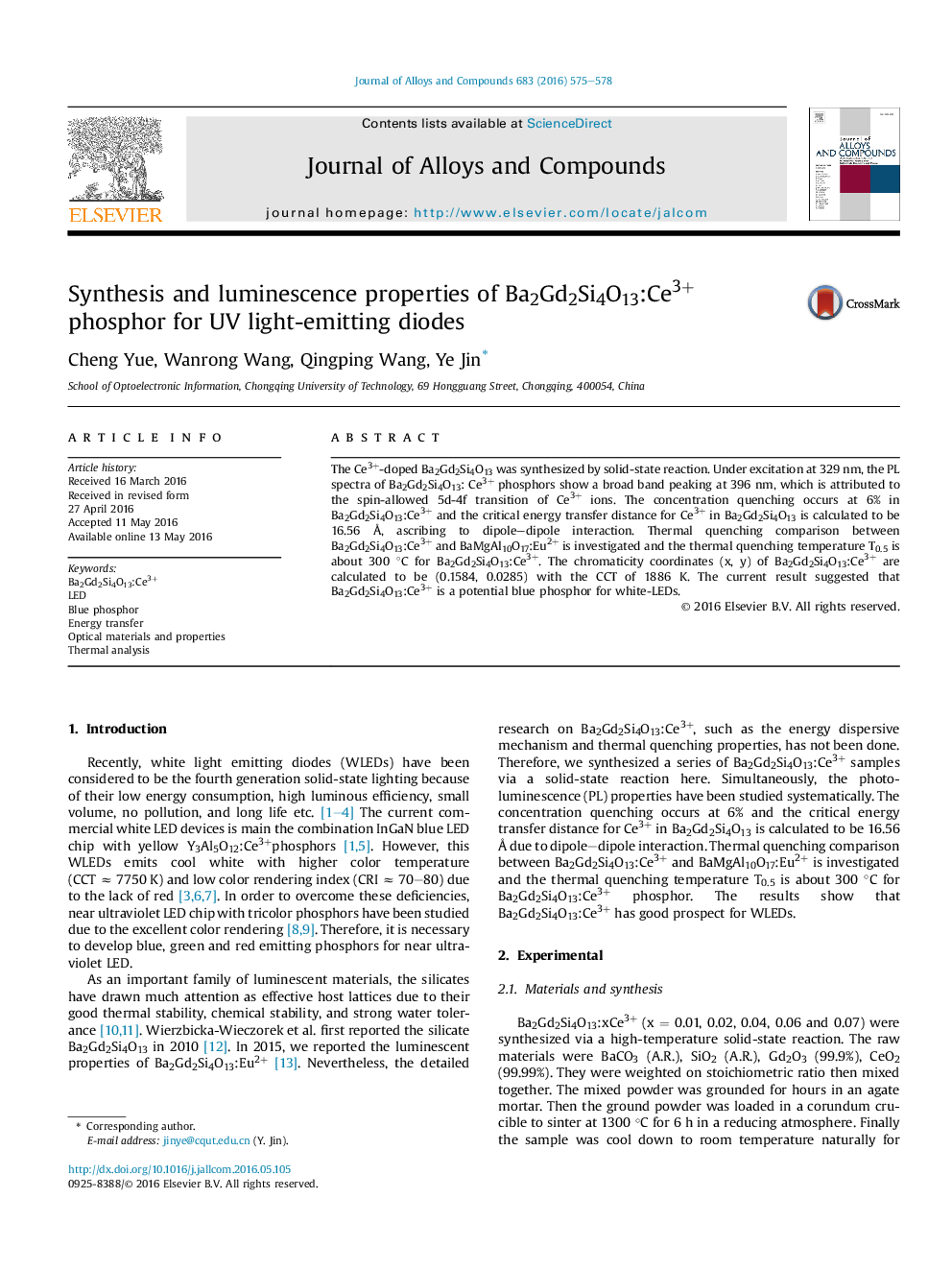| Article ID | Journal | Published Year | Pages | File Type |
|---|---|---|---|---|
| 1605506 | Journal of Alloys and Compounds | 2016 | 4 Pages |
•The luminescence properties of Ba2Gd2Si4O13:Ce3+ have been studied systematically.•The critical energy transfer distance for Ce3+ in Ba2Gd2Si4O13 is calculated to be 16.56 Å due to dipole–dipole interaction.•Thermal quenching comparison between Ba2Gd2Si4O13:Ce3+ and BaMgAl10O17:Eu2+ is investigated.•The CIE (x, y) and the correlated color temperature (CCT) were calculated as (x, y) = (0.1584, 0.0285) and 1886 K.
The Ce3+-doped Ba2Gd2Si4O13 was synthesized by solid-state reaction. Under excitation at 329 nm, the PL spectra of Ba2Gd2Si4O13: Ce3+ phosphors show a broad band peaking at 396 nm, which is attributed to the spin-allowed 5d-4f transition of Ce3+ ions. The concentration quenching occurs at 6% in Ba2Gd2Si4O13:Ce3+ and the critical energy transfer distance for Ce3+ in Ba2Gd2Si4O13 is calculated to be 16.56 Å, ascribing to dipole–dipole interaction. Thermal quenching comparison between Ba2Gd2Si4O13:Ce3+ and BaMgAl10O17:Eu2+ is investigated and the thermal quenching temperature T0.5 is about 300 °C for Ba2Gd2Si4O13:Ce3+. The chromaticity coordinates (x, y) of Ba2Gd2Si4O13:Ce3+ are calculated to be (0.1584, 0.0285) with the CCT of 1886 K. The current result suggested that Ba2Gd2Si4O13:Ce3+ is a potential blue phosphor for white-LEDs.
